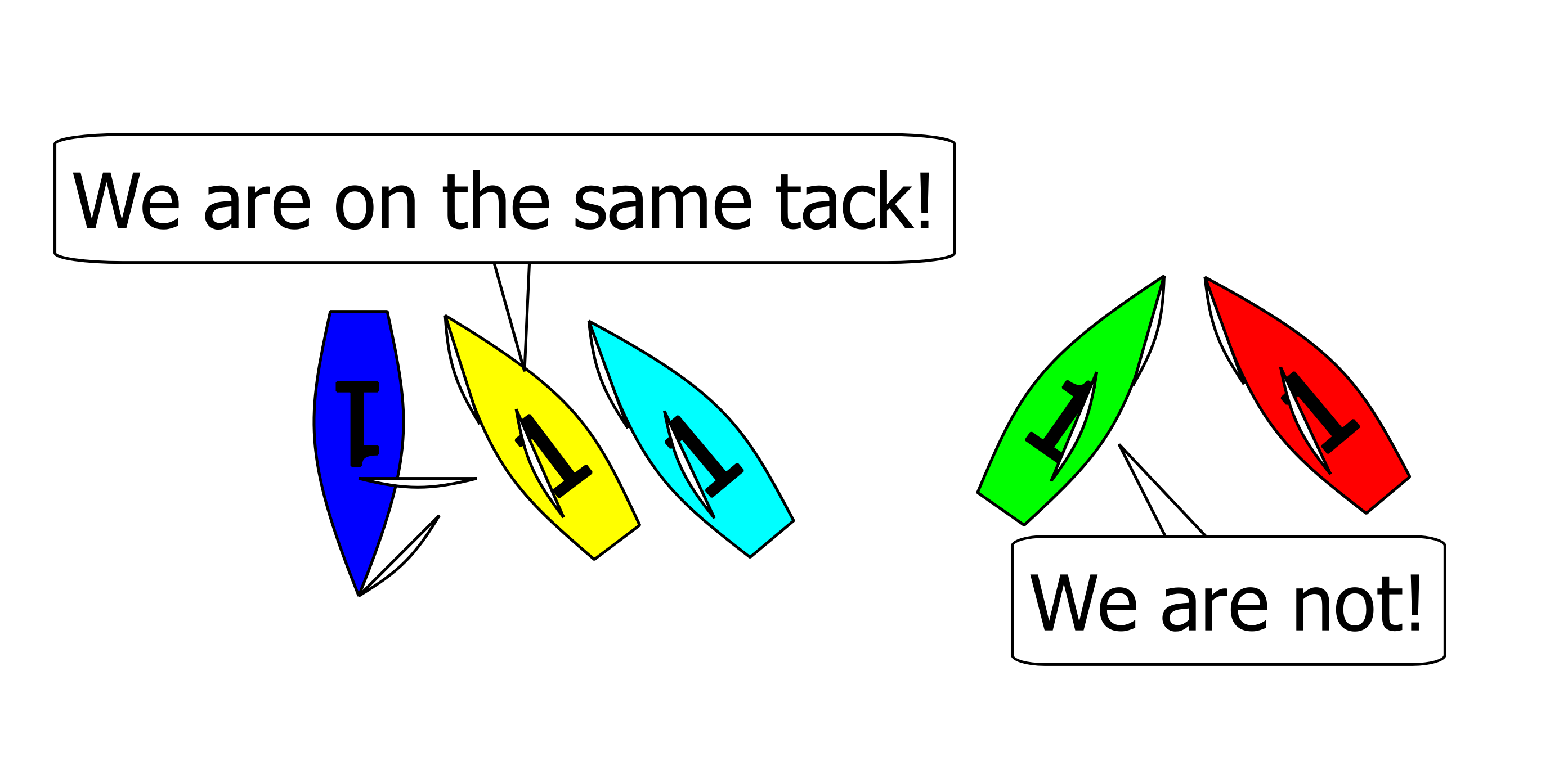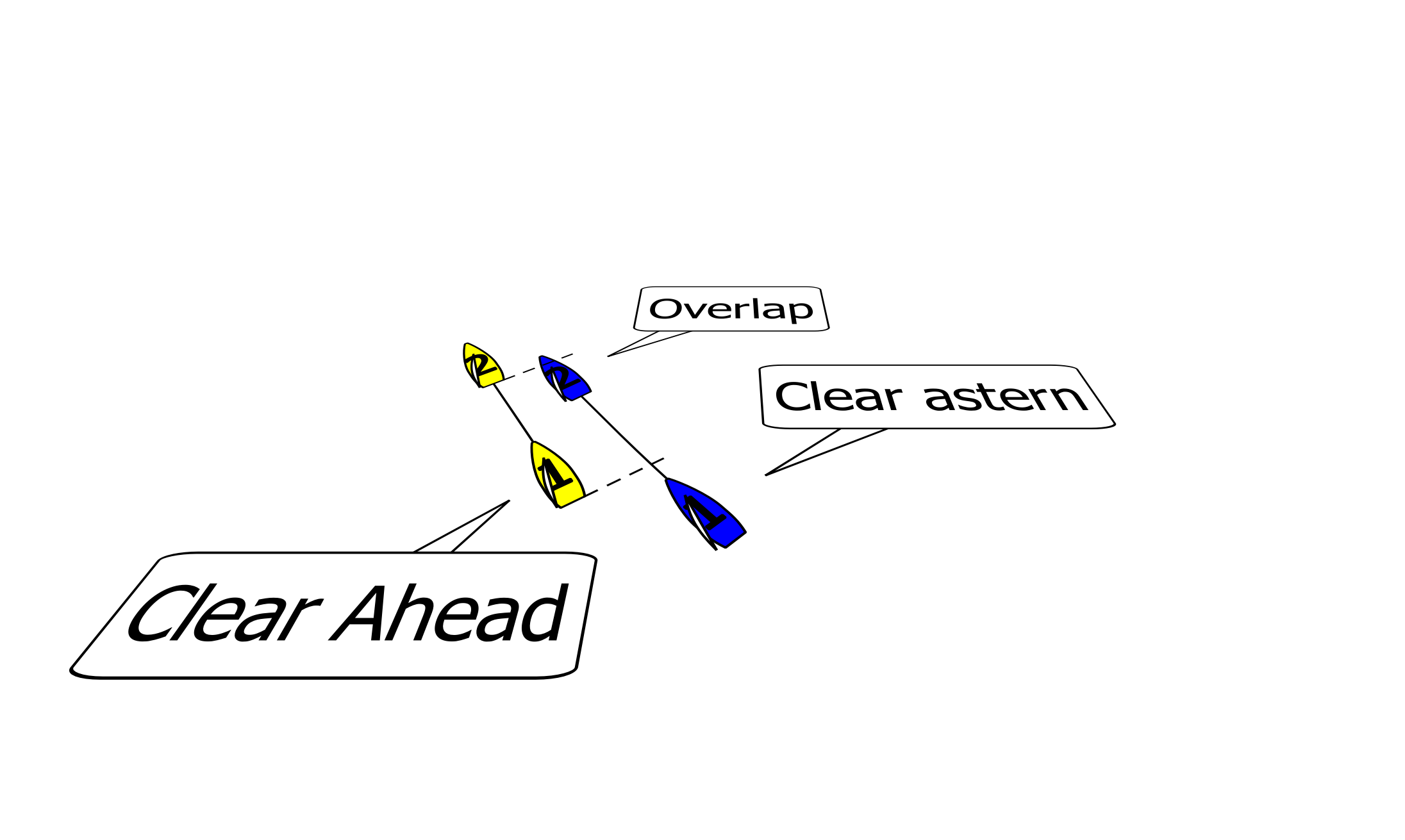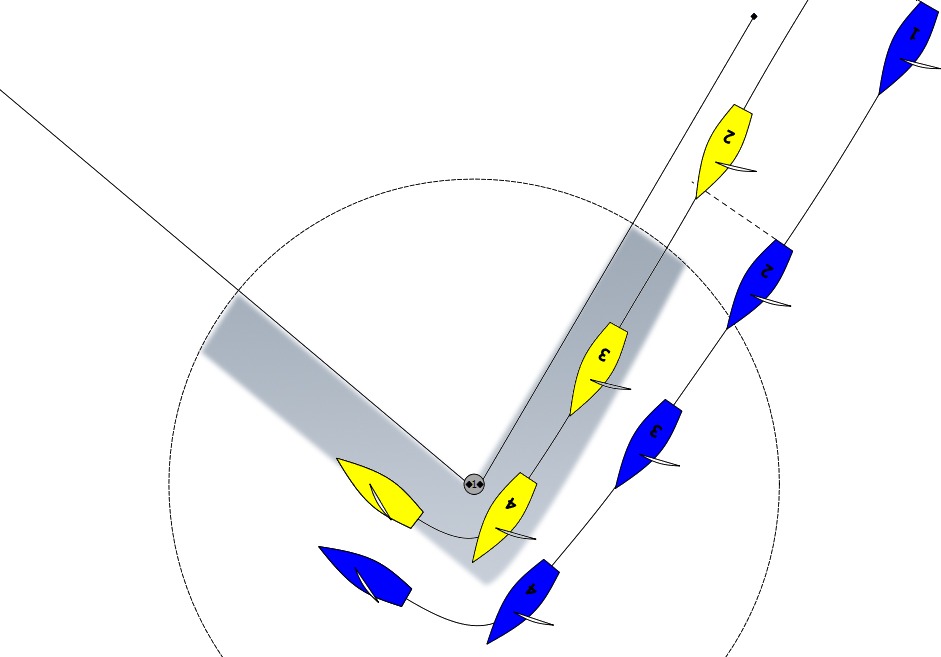Sailing racing rules simplified
Question: “What do you call two sailing boats in sight of each other?” Answer: “A race…”
Even when we are cruising around the Whitsundays on a leisurely Sunday afternoon, we still have this sparkle deep inside us that wants to go quicker than the boat next to us. Particularly, if that boat is similar and is going roughly at the same speed.
Coming from a racing background, I had to learn to relax and not adjust the sails every 5 seconds, which was driving my wife crazy. But we may still enjoy the occasional regatta through our local yacht club or find ourselves enrolled in a “race” somewhere on our travels.
So, what are the racing rules in a nutshell?
This is a simple question to which there is no easy answer. The rules of sailing are written in a rather convoluted and legalistic style. Add to this the complexity, which arguably equals the combined rules of cricket, rugby, and football.
Sailing racing rules simplified shows you 4 important rules that will hopefully keep you out of trouble…
Let me start by listing the four most important rules in a specific order. If you remember nothing else, try to get this stored and locked away, as it will get you 95% of the way towards finishing your race without seeing any red protest flags.
The sailing race rules are defined in the 2021 – 2024 Racing Rules of Sailing, a light read that comes highly recommended for mitigating any insomnia issues you may have. Supplementing this is the World Sailing Interpretations of the racing rules, which are, in essence, “case law”, a precedence that must be followed in applying the racing rules.
However, here are my 4 “must-know” rules:
1. AVOIDING CONTACT (rule 14)
A boat shall avoid contact with another boat if reasonably possible. However, a right-of-way boat or one entitled to room or mark-room need not act to avoid contact until it is clear that the other boat is not keeping clear or giving room or mark-room, and shall be exonerated if she breaks this rule and the contact does not cause damage or injury.
This is no more than common sense but, in my opinion, the number 1 rule to remember. If this is the only rule you follow, you will never get into any trouble and, consequently, will win none of your races.

In the above example, Blue is on a starboard tack, and Yellow is on a port tack (explained below) so Yellow needs to stay clear of Blue. However, if Blue could have avoided contact and there was damage or injury, Blue too could be disqualified. The point is, “don’t take the right of way” without at least understanding the potential consequences…
2. ON OPPOSITE TACKS (rule 10)
When boats are on opposite tacks, a port-tack boat shall keep clear of a starboard tack boat.
This is somewhat more arbitrary. It is a bit like giving way to the right. It is just a rule. You are on a starboard tack if the wind comes from your starboard side and your boom is on your port side.
Conversely, you are on a port tack if the wind comes from your port side and your boom is on your starboard side.
In the above example, Blue is on starboard, and Yellow is on a port tack, so Yellow needs to stay clear of Blue.
3. ON THE SAME TACK, OVERLAPPED (rule 11)
When boats are on the same tack and overlapped, a windward boat shall keep clear of a leeward boat.
This means that when 2 boats are both on the same tack, the boat that is closest to where the wind is coming from needs to stay clear of the other boat.
 This is a little less arbitrary because the windward boat is more manoeuvrable than the leeward boat because it can tack at any time.
This is a little less arbitrary because the windward boat is more manoeuvrable than the leeward boat because it can tack at any time.

In the above example, at position 2, where Blue established and overlapped, Blue has to stay clear of Yellow because Blue is the windward boat.
But we all know that life is not this simple. There are some other considerations that could get you a little further towards a podium finish.
One of these is going around the mark. Let’s have a look at this next…
4 Giving Mark-Room (rule 18.2(a)
When boats are overlapped the outside boat shall give the inside boat mark-room, unless rule18.2(b) applies.
Let’s have a quick look at what defines “the zone”.
Zone
The area around a mark within a distance of three hull lengths of the boat nearer to it. A boat is in the zone when any part of her hull is in the zone.

So the zone is an imaginary circle that has the mark in its centre. Although this rule is much more elaborate than just this example, it is a good rule to remember.
For example, it doesn’t apply if the boats are on opposite tacks or when one boat is entering the zone and another is leaving it.
In short, when you find yourself overlapped going into “the zone”, make sure you give mark-room to the boat on the inside. I.e., leave a laneway for the inside boat to round the mark. This means providing enough room for the other boat to reach the mark and to go around it: BUT NO MORE.
If you follow these four simple rules, you will most likely finish your race without incident. You will also most likely order your first post-race beer sometime after the rest of the fleet orders their third.
Please note that the above is a super simplified synopsis of the racing rules. As stated before, with some emphasis, these are just a few rules that can help you avoid trouble if you are unfamiliar with the complete racing rules. Good luck at your next regatta; we may see you out there.
Author
-

Rene is a keelboat instructor and sailing coach in the Mandurah area WA. He is also the author of several books about sailing including "The Book of Maritime Idioms" and "Renaming your boat".
View all posts



2 thoughts on “Sailing racing rules simplified”
Hello.
I enjoyed your site but what happens at the finish. Does everyone have to sail away out of the way after crossing the line?
Regards
Nigel
Hi Nigel,
I think after you finish you should stay clear of all other boats still racing.
The rules define “finish” as:
“A boat finishes when any part of her hull, or crew or equipment in normal position, crosses the finishing line from the course side. However, she has not finished if after crossing the finishing line she
(a) takes a penalty under rule 44.2,
(b) corrects an error under rule 28.2 made at the line, or
(c) continues to sail the course.”
So if this rule is satisfied and you are “finished”, then you may look at rule 24.1
“If reasonably possible, a boat not racing shall not interfere with a boat that is racing.”
I hope that makes sense…